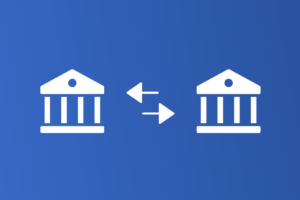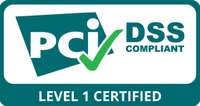Receiving and making B2B payments is an essential function for businesses; done correctly, it can vastly improve cash flow and the bottom line.
As consumers, we have all come to expect fast, safe, and convenient payment solutions, whether online or in-store. But what about B2B payments? COVID-19 brought a rapid shift to remote working for many companies. Dealing with paper invoicing, purchase orders, and hard-copy checks became impossible. Many businesses had to address the friction points in their B2B payment process. Global technology advancements have also accelerated growth in digital payment processing, giving companies fast and simple ways to handle B2B payments.
Regardless of how you accept and make B2B payments — credit cards, ACH payments, wire transfers, digital payments, checks, or cash — there are more options than ever to streamline your operations. Let’s look at the ins and outs of the B2B payment process to help you find the best B2B payment solutions for your business.
What are B2B payments?
Business-to-business payments are the transfer of monetary value from one business to another in return for goods or services. If you’re a company that services other businesses, as opposed to end customers, you will accept business payments. If you’re a business that buys goods or services from other companies, you will make B2B payments.
For example, if you’re a consumer company that sells televisions, you receive B2C payments from your customers and make outgoing B2B payments to your suppliers for things like manufacturing. Alternatively, if you are a B2B business selling car parts to mechanics, you will receive B2B payments from your business customers and make B2B payments to your suppliers.
Unlike B2C payments, which are usually instant — like when you pay for groceries at the supermarket — B2B transactions are more complex, and it can take longer to process payments. Thankfully, innovative payment platforms like ECRYPT by Preferred Payments make B2B payments as simple and seamless as B2C.
What are the different types of B2B payment methods?
In today’s multi-channel environment, wrestling with multiple payment methods can be frustrating for businesses, but technology has the answers. Whether you use ACH payments, credit card payments, or cash sales, ECRYPT by Preferred Payments is a customizable end-to-end payment solution that can manage all payment options from one place. Let’s look at six of the most common types of B2B payments.
1. ACH payments & e-checks
U.S.-based companies can use the Automated Clearing House Network (ACH) to make or receive bank account payments by transferring money electronically within the network. According to Nacha, which governs the ACH network, B2B ACH payments grew by 20.4 percent between 2020 and 2021, totaling a whopping $5.32 billion in payments.
ACH payments have long been favored by companies and organizations, including the United States Government, as an alternative to wire transfers, credit card payments, paper checks, and cash. Its popularity owes to its speed, cost, security, and ease. ACH payments are not subject to the same processing fees as credit cards, and most transactions settle within three business days. You can also use ACH to set up recurring payments. E-checks, a type of ACH payment, are the digital version of a paper check. They allow companies to transfer funds from the payer’s business checking account to the receiver’s bank account. Preferred Payments offers a variety of reliable, secure solutions to reduce costs and efficiently accept electronic check payments.
2. Credit card payments
Credit cards are growing in popularity as a B2B payment, especially during the pandemic. They offer real-time funds via a payment gateway, simple financial reporting, higher-value transactions, and a better customer experience. However, many businesses resist using this payment option, and it’s easy to see why. Nilson Report found that in 2020, U.S. businesses paid $110 billion in credit card processing fees. Luckily, there is a way for B2B companies to reduce credit card transaction fees by up to 40 percent per month. The solution is to cut down the interchange fees (the fees charged by credit card companies every time a card is run) by increasing the amount of security information provided to the credit card company. Most B2B companies don’t do this because it’s a headache, but ECRYPT’s Virtual Terminal makes it simple.
3. Paper checks
The 2022 AFP Digital Payments Survey, underwritten by J.P. Morgan, revealed that the use of checks by B2B companies in the U.S. and Canada continues to decline. Around 33 percent of B2B payments are made by check, down nine points from 2019. Globally, checks account for 31 percent of B2B payments, and this downward trend is set to continue.
Many companies use checks to avoid credit card processing fees. However, checks also come with several disadvantages. Paper checks are at the mercy of the postal service and are subject to delays, which can slow down B2B payment processing. They must also be manually handled, which requires more resources and creates a lag in financial reporting. Paper checks are not the best option for companies worried about security as they are far more susceptible to fraud than digital payment methods.
4. Digital payment platforms
Companies can also use digital payment platforms like Google Pay, PayPal, Venmo, and Skrill to process electronic payments. These fintech companies transfer funds between bank accounts. One of the key advantages is speed, but the transaction fees often deter businesses from this type of payment provider.
5. Wire transfers
Thanks to technological advances, wire transfer is now one of the fastest B2B payment solutions, with some transactions completed in real-time. Wire transfers are electronic payments that move money from one account to another using a financial network. They can be used for domestic and international payments, and the payment processing fees are usually much less than banks.
6. Cash
The COVID-19 pandemic has changed our relationship with cash. According to the Federal Reserve Bank of San Francisco, there was a 7 percent decrease in cash payments between 2019 and 2020 in the U.S. Despite this, many businesses still rely on cash for B2B payments. However, cash is considered the least effective payment method for B2B transactions. Cash payments are far less secure, cumbersome to handle, unsuitable for larger payments, and subject to legal regulations.
How does the B2B payment process work?
The B2B payment process differs between businesses. The traditional B2B payment cycle includes the seller setting payment terms, the customer’s accounts payable department raising a purchase order, the seller fulfilling the order and sending an invoice, the buyer paying the invoice, and accounts receivable settling the accounts. It’s very long-winded!
With digital payments, this payment process is significantly simplified. For example, a SaaS company that provides marketing software might require buyers to sign up for a subscription via their website and provide their credit card details. Then they are automatically billed monthly or annually with recurring payments unless the customer cancels. All payments and financial reporting are processed automatically, so accounts receivable can understand cash flow with the click of a button.
What are the advantages of digital B2B payment processing?
Businesses all over the U.S. (and the world) are going digital for B2B payments. Let’s look at why.
Speed & simplicity
A report by AFP found that speed of payment is a significant driver in the adoption of digital payment methods, especially during this time of inflation and weakened supply chains. With digital payment processing, businesses can banish paper invoices, purchase orders, and checks. All financial transactions are recorded, processed, and analyzed in the cloud. Companies can also reduce the time and resources required to handle B2B payments manually.
Improved cash flow
Cash flow is one of the main reasons why new businesses don’t succeed. Digital B2B payment processing makes it fast and easy for your customers to pay you rather than handling checks and cumbersome paperwork. You get the funds in your account faster, and everyone is a winner.
Secure payments
Sending cash or checks in the mail comes with inherent risks. While digital payments aren’t entirely exempt from criminal activity, they do offer ever-strengthening cyber security protection. ECRYPT’s security engine protects every credit card transaction and reduces the risk of fraud.
Accurate reporting
Digital B2B payment processing allows companies to do away with error-prone manual reporting and replace it with accurate machine-based reporting. A solid handle on your cash flow is essential for a thriving business.
What are the challenges of B2B payments?
The main challenge of digital B2B payments, especially for small to medium-sized businesses, is a lack of IT resources. The AFP report found that 34 percent of respondents cited a shortage of IT resources as a major barrier to implementation.
Another challenge is the cost surrounding credit card transactions. Since interchange rates for corporate, business and purchasing cards are much higher compared to consumer cards, some B2B companies opt-out of accepting credit cards all together. However, ECRYPT’s rate optimization solution can significantly lower these expensive interchange fees.
How to set up B2B payments with ECRYPT by Preferred Payments
Ready to take your business to the next level? ECRYPT by Preferred Payments is a powerful and secure payment platform and API designed to grow revenue and scale your business. Our U.S.-based support team is here to help you every step of the way. Get in touch to find out how we can streamline your payment process and supercharge your business today.



